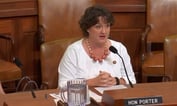In the February 2007 Tax Advisor column in Investment Advisor from Tax Talk Today’s Les Witmer, the process was described for how individuals can file on their tax returns for the Telephone Excise Tax Refund (TETR). The TETR is a one-time refund that can be requested by businesses or individuals on their 2006 federal tax returns, but it can get a little complex for businesses. In a nutshell, this is a refund of telephone excise taxes paid on long distance and bundled telephone services billed after February 28, 2003 and before August 1, 2006. The January Webcast of Tax Talk Today offered details on how businesses can go about requesting the refund:
- Actual. This option will require all phone bills for the time period that qualifies for the refund. Businesses must determine the exact amount of telephone excise taxes paid on long distance and bundled telephone services during that time period.
- Formula. For businesses unable or opting not to spend the time locating and deciphering old phone bills, the IRS offers a formula that can simplify the process. This formula requires only April and September 2006 phone bills, plus an accurate phone service expense figure for the entire period qualifying for the refund. Some tax pros expect to use the formula for most of their business clients. “I don’t think that most of my clients are going to go dig out 41 months’ worth of bills, and they certainly aren’t going to have me going through 41 months’ worth of bills,” said Marianne E. Kreycik, EA, CPA, administrative manager of Jongeward Kreycik Advisors PLLC and president of Marianne E. Kreycik P.S. in WHERE? Note that caps, based on the total number of employees, can apply to the amount of the refund requested using the formula method.
- Standard. Sole proprietors (such as Schedule C, E, and F filers) with gross receipts under $25,000 cannot use the formula method to request the Telephone Excise Tax Refund. These taxpayers can request a standard, exemption-based amount allowed by the IRS, which covers both personal and business phone expenses.








 February 01, 2007 at 02:00 AM
February 01, 2007 at 02:00 AM










